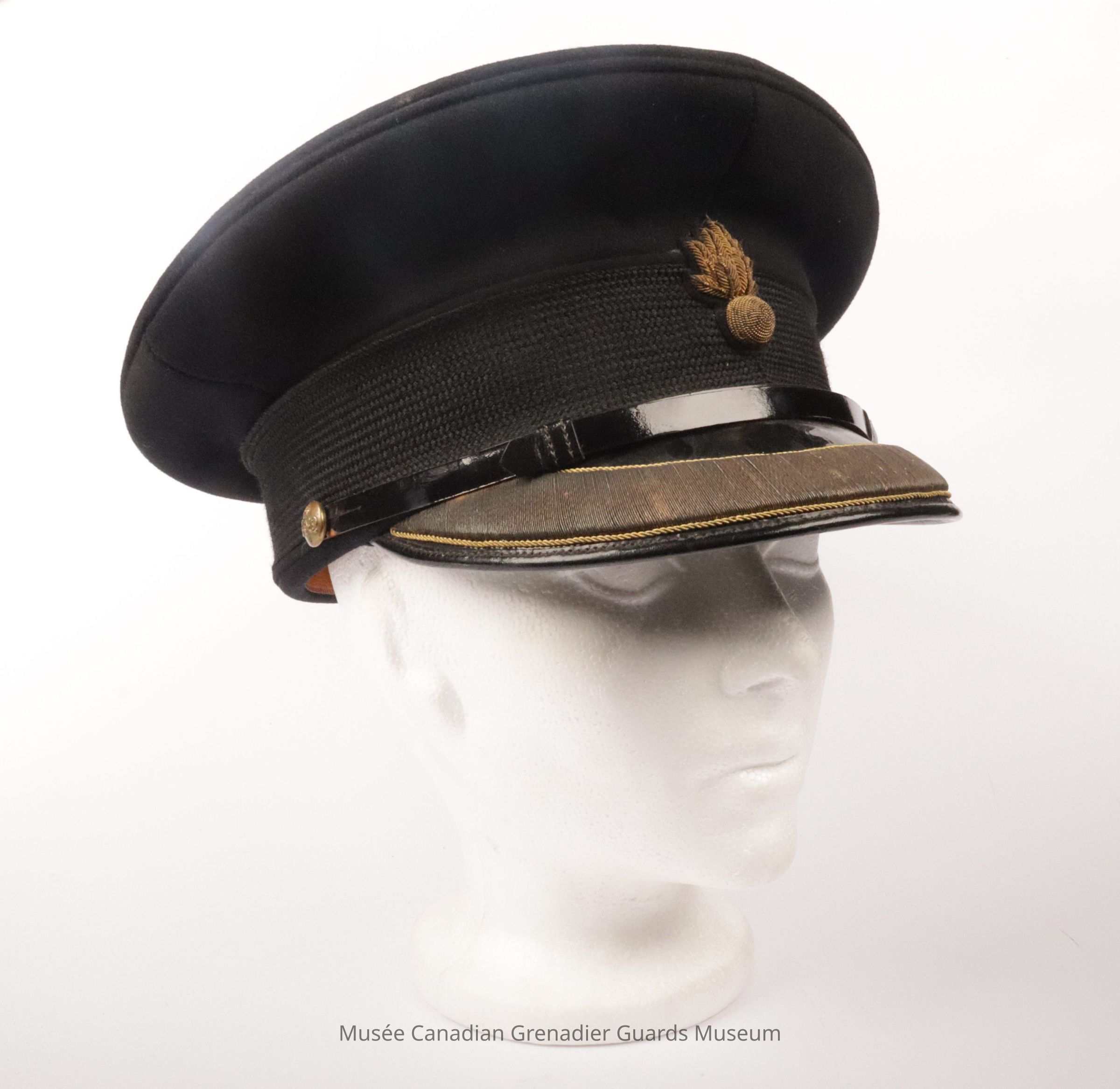Context
The Peak Cap was used in the early stages of the First World War as the primary headgear, but increased head injuries led to its replacement by the Brodie helmet as primary combat head protection.
In the Canadian Forces, the peaked cap (French: casquette de service) is the primary headgear for men's Royal Canadian Navy service dress. It has been abandoned in the Royal Canadian Air Force in favour of the wedge cap. It has also been eliminated from the Canadian Army service dress in favour of the beret, with two exceptions. General officers and chief warrant officers wearing army uniform can wear either a beret or a peaked cap with service dress. Royal Canadian Infantry Corps members of Foot Guards units such as the Canadian Grenadier Guards wear the bearskin cap with full dress but the peaked cap with undress and service dress.
The peak of the cap of non-commissioned members and subordinate officers is left plain, and officers' caps are adorned with one or more bands of braid (depending on rank) at the forward edge of the peak. The peak of the junior officer's cap has one row of plain gold wire along the forward edge, that of the senior officer has a row of gold oak leaves across the forward edge, while that of the flag officer has two rows of gold oak leaves, one along the forward edge and one near the cap band. The same oak leaves are worn by the Governor General of Canada as Commander-in-Chief of the Canadian Armed Forces.
The service cap is theoretically unisex, although there is a service hat (French: chapeau de service) for women which does not have a crown top and has a stiff brim all around. The front of the brim is formed into a visor and the sides and back are folded upwards.Name/Title
Unknown
